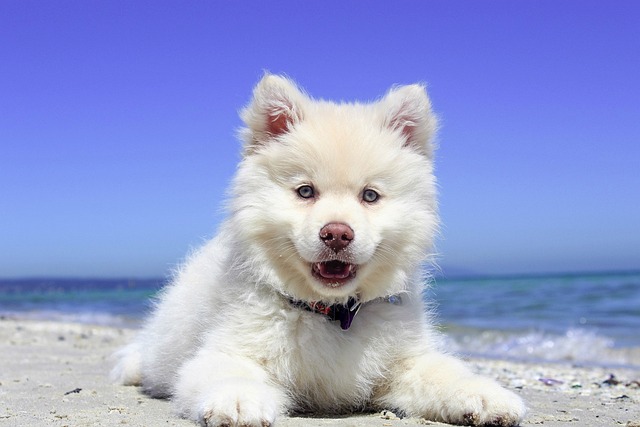
How do i train my dog to be obedient?
Watching your dog dart across the park ignoring your calls isn’t just frustrating—it can put them at risk near busy streets or public spaces.
What to do when your dog ignores you outside? It’s a question that makes new owners flush with frustration when their 8-month-old Lab sprints toward a group of kids, tail wagging, while they yell “Come!” until their throat hurts. Last week, my neighbor in Arizona chased her Australian Shepherd through a park for 10 minutes—he finally stopped, but only to roll in a patch of clover, ignoring her outstretched hand. “Why does he listen at home but not here?” she groaned. Let’s turn that confusion into a plan, with treats, not tension.
Dogs ignore you outside because the world is a buffet of distractions: squirrels rustling, other dogs barking, grass that smells like adventure. Their brains aren’t being “bad”—they’re just prioritizing the most exciting thing in front of them. Vets in Texas call this “stimulus overload”: a park has 100x more interesting smells and sounds than your living room, so their focus scatters. Breeds built to hunt or herd—Beagles, Border Collies—are extra prone; their instincts scream “follow that scent!” My cousin’s Corgi, who “comes” instantly in her Colorado kitchen, once ignored her for 20 minutes at a trailhead, fixated on a rabbit’s track. It’s not defiance—it’s curiosity.
Fixing it starts with making you more interesting than the distraction. Carry “high-value” treats outside—think freeze-dried liver or bits of hot dog, not their usual kibble. When your dog looks at you, even for a split second, yell “Yes!” and toss a treat. This teaches “looking at my human = awesome things.” For walks, use a 15-foot training leash (not a retractable one—they’re hard to control). If they start to bolt, gently reel them back, say “Watch me,” and reward when they make eye contact. A Chicago neighbor’s Pit Bull mix, who once dragged her toward a food truck, now checks in with her every 30 seconds—all because liver treats beat the smell of fries.

Practice in “distraction stages.” Start in your quiet backyard: toss a toy a foot away, say “Come,” and reward if they leave it. Once they nail that, try a quiet street with a few parked cars. Then, move to a park during off-hours (early morning, when it’s less busy). Never skip a reward—if they come eventually, still praise them. My Seattle friend made that mistake: her rescue dog stopped coming entirely after she scolded him for taking too long. Positive reinforcement works because dogs think, “Even if I hesitate, coming back gets me good stuff.”
Let’s cover the basics of responsible outdoor training. First, keep vaccines current—rabies shots are legally required in all 50 states, and if your dog bolts, an unvaccinated pup is at risk of disease. When out, always carry poop bags—I saw someone in Portland fined $150 last month for skipping this, and it’s just common decency. Remember, if your dog ignores you, never scold or yank their leash. That just makes them associate “listening” with stress. Instead, take a breath, walk away from the distraction, and try again with a bigger treat. Trainers in Florida swear by this—my Arizona neighbor’s Aussie now runs to her when she pulls out the liver treats, even with other dogs barking.
Community living means being considerate. In apartment complexes, practice “watch me” in the hallway before heading to the park—fewer distractions build confidence. At the dog park, keep your dog in sight; if they ignore you, call them back before they bother another pup. Clean up treat wrappers—litter bugs everyone in New York City. And if you’re struggling, join a group class: a guy in Denver told me his Golden learned faster with other dogs around, because the trainer showed him how to “out-compete” the distractions with better rewards.
So, dogs ignore you outside because the world is too exciting—not because they don’t love you. With tiny treats, patience, and making you the best thing in the park, they’ll start checking in, one “Yes!” at a time.

Watching your dog dart across the park ignoring your calls isn’t just frustrating—it can put them at risk near busy streets or public spaces.

New puppy owners often find themselves rushing to clean up accidents before they set in, and that’s where puppy pad training becomes a game-changer.

If you've noticed your dog's waistline disappearing and your veterinarian has mentioned those few extra pounds, your first instinct might be to simply reduce the amount of food in their bowl.

Training a dog to use a designated spot indoors isn’t as daunting as many new owners fear, but it does take consistency and an understanding of your pet’s needs.

That moment of dread on a walk is all too familiar for many new dog owners. You see another dog approaching down the sidewalk of your neighborhood

If the sight of another dog on your neighborhood walk makes your heart sink as your own dog erupts into a frenzy of barking and lunging, you're not alone.